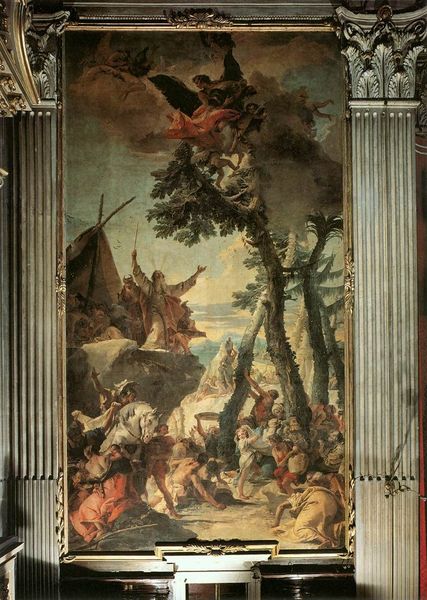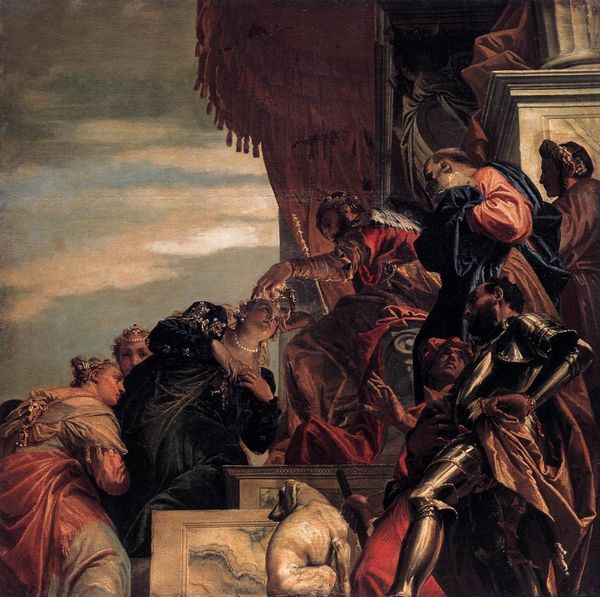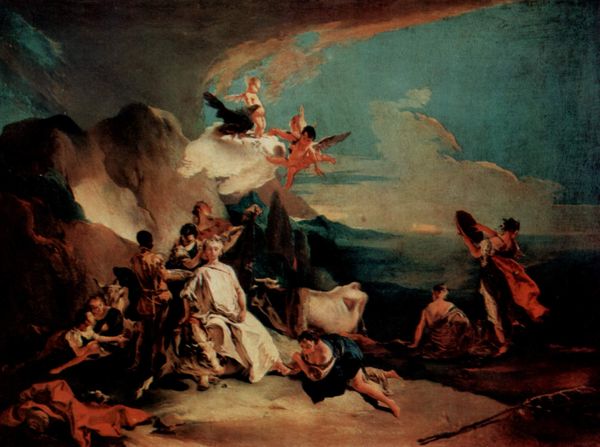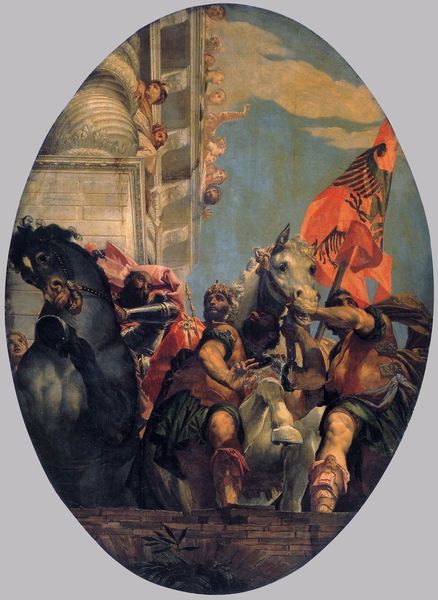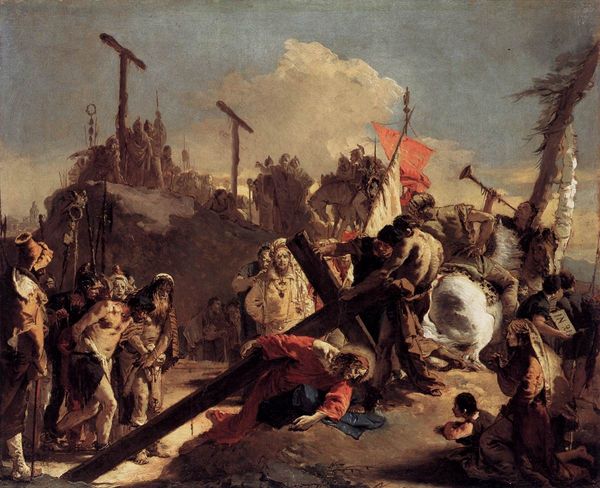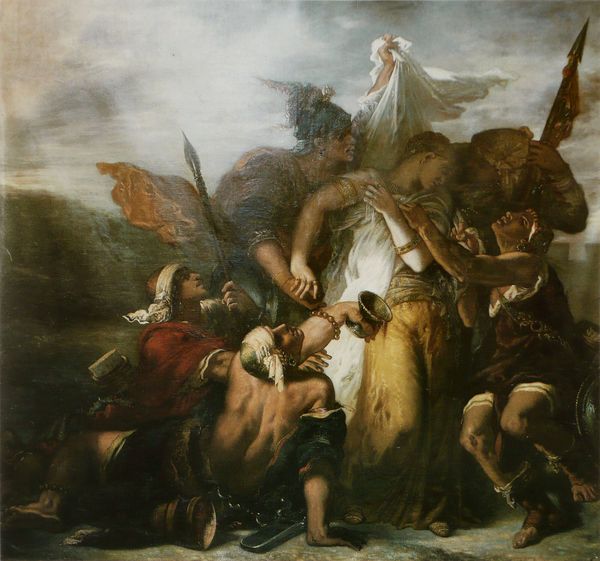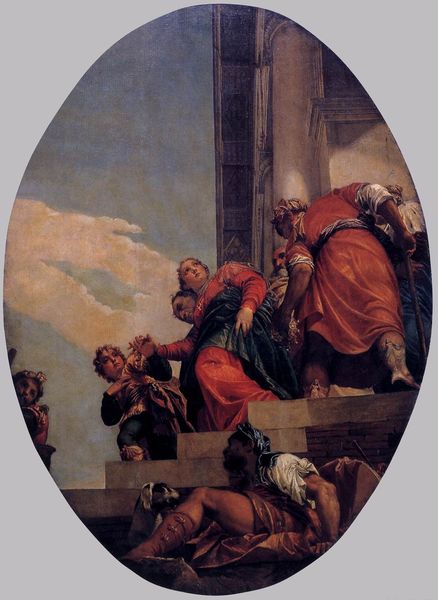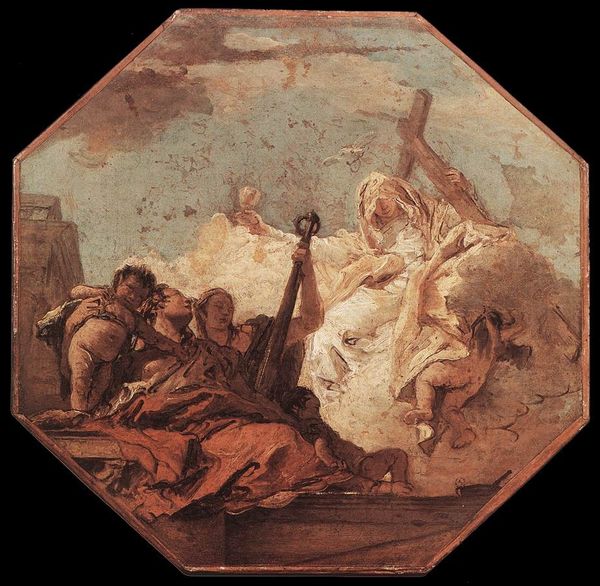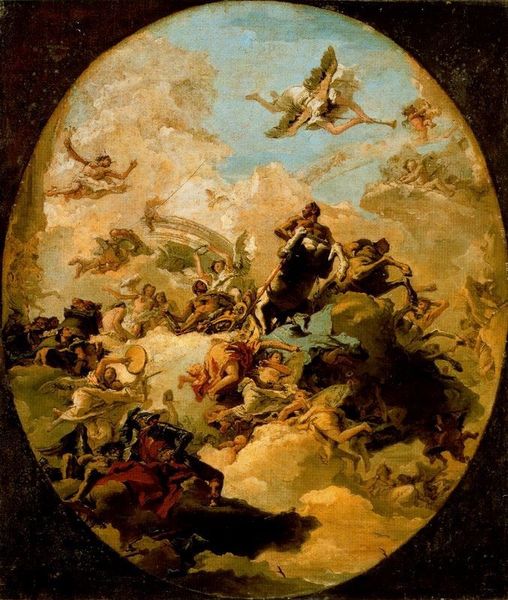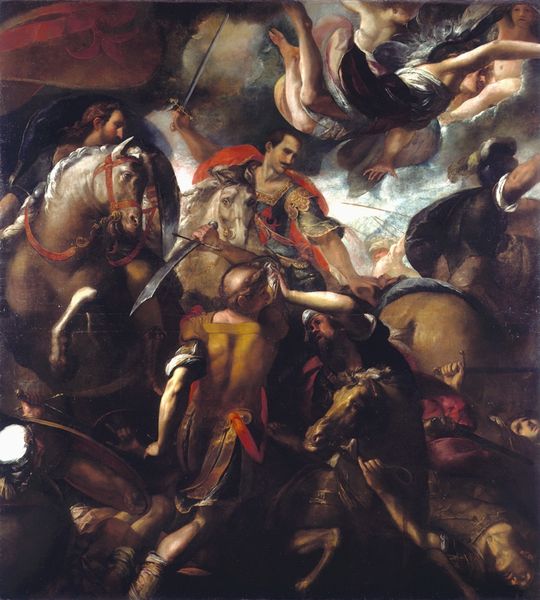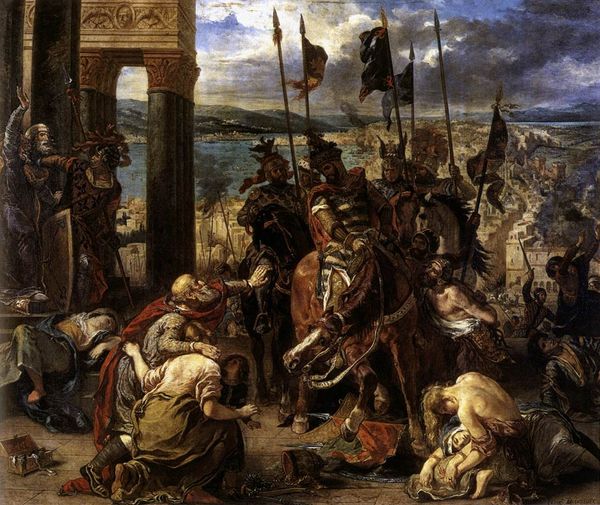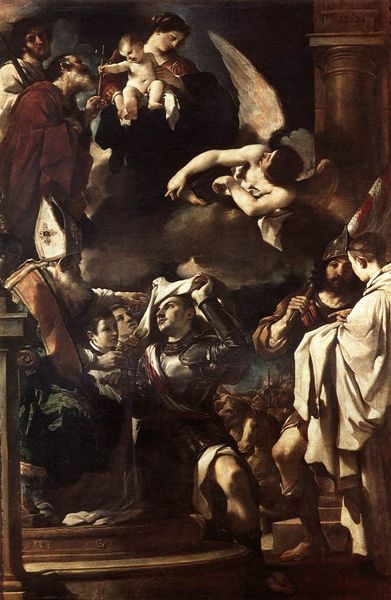
painting, oil-paint
#
allegory
#
narrative-art
#
baroque
#
painting
#
oil-paint
#
figuration
#
christianity
#
history-painting
#
italian-renaissance
Dimensions: 525 x 1000 cm
Copyright: Public domain
Curator: This is Giovanni Battista Tiepolo's "The Sacrifice of Melchizedek," an oil painting completed in 1742. The scene depicts a biblical narrative. What are your initial thoughts? Editor: There's an undeniable dynamism. It's dominated by this intense visual stratification, dividing earth from heaven through gesture and light, which feels very staged. Curator: Indeed. Tiepolo’s use of light creates a visual hierarchy that’s interesting from a compositional standpoint. Note the diagonal arrangement of the figures and the theatrical, almost operatic, gesturing. The color palette is carefully calibrated too. Editor: But I see it less as pure aesthetics and more as the projection of power. It’s a celebration of religious authority that's not incidental, coming at a specific historical and political conjuncture in the Church's influence, or re-establishment, in Venice. Look at the opulent robes, the angelic figures—everything serves to elevate the Church. Curator: The dynamism isn't accidental. He masterfully balances earthly realism with ethereal grace in this Baroque example. Consider the perspective: it emphasizes the sacrifice's sacredness, drawing our eyes upwards towards the divine. Editor: Sure, but for whom, and for what purpose? Melchizedek here could be seen as symbolic of the perceived divine right inherent in patriarchal structures of religious power during this period. It is the assertion of dominance, neatly packaged as religious ritual. The people offer their sacrifices, while the flag and angels above signal to God's plan to elevate it above everything. Curator: Perhaps. Still, we can appreciate the artwork for its sheer visual inventiveness. The rendering of fabric, the varied textures, the mastery of form, light, color—the structure. All stand on their own, don't you think? Editor: And yet, acknowledging that very "mastery" becomes problematic without situating it within a historical discourse that reflects how certain artistic choices become tools to validate particular beliefs and power dynamics. The "grand spectacle" does very heavy lifting indeed. Curator: Point taken. Although I come at this painting with attention primarily given to it's technical innovations, thinking with you is interesting to help identify what stories it tells outside of those confines. Editor: Likewise. Your eye for structural harmony draws a beautiful reading out, so it has been important to remember where we may depart with ideas, we can admire and acknowledge art in so many ways.
Comments
No comments
Be the first to comment and join the conversation on the ultimate creative platform.
